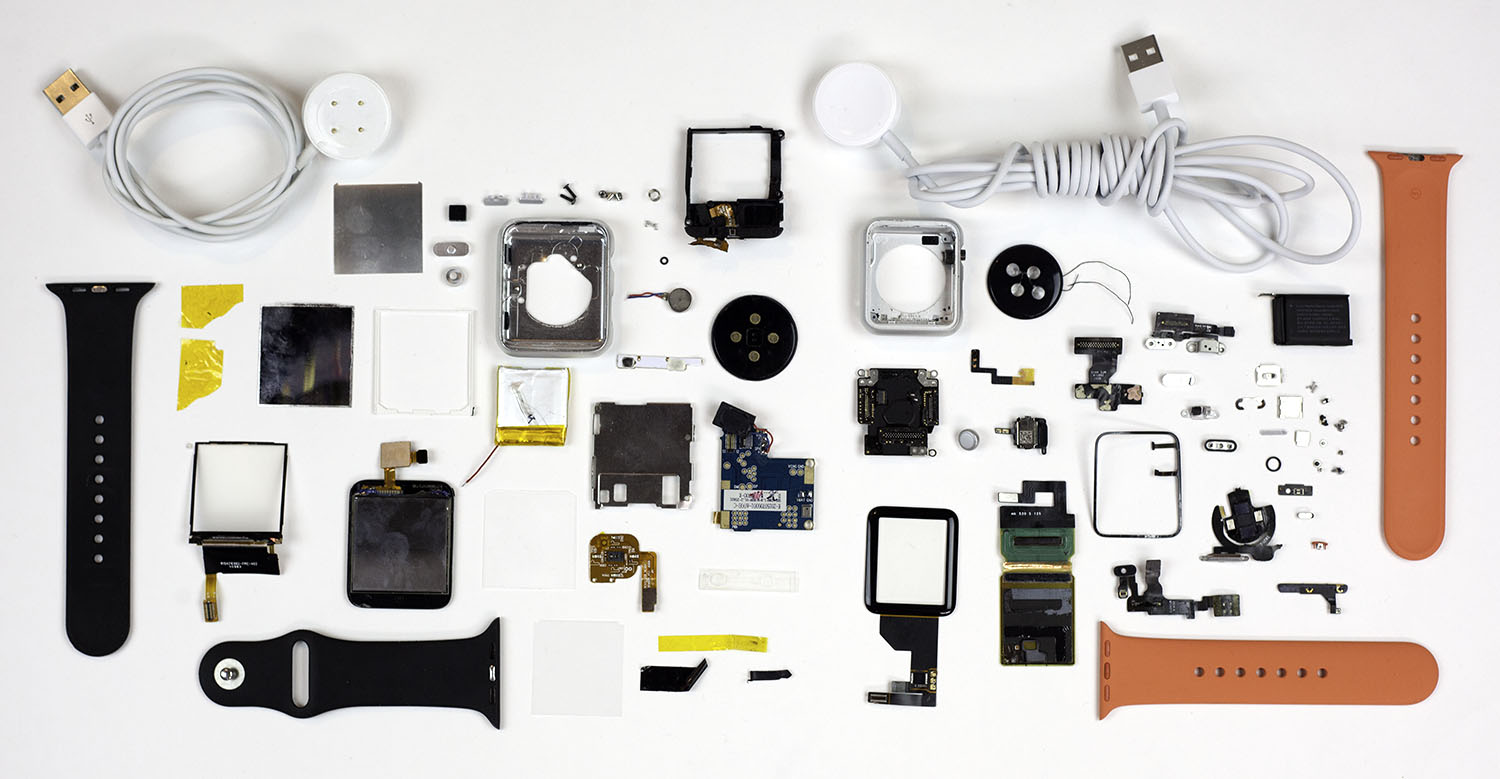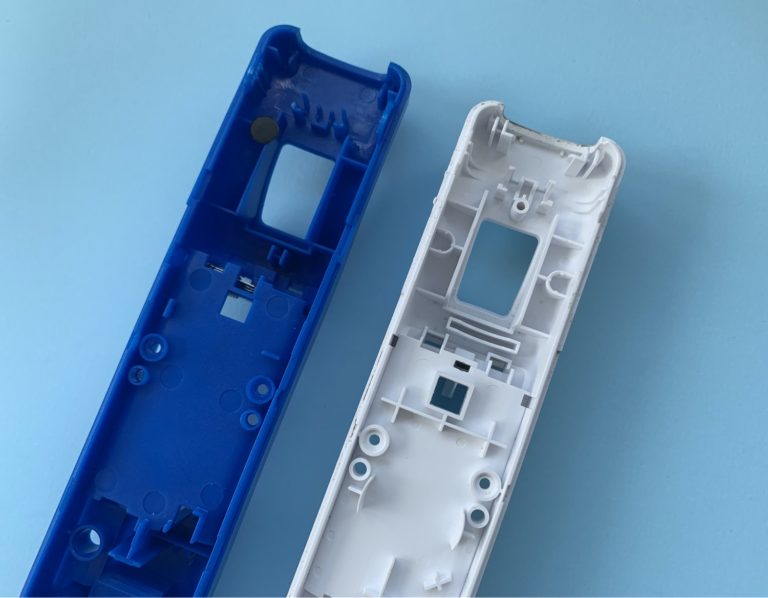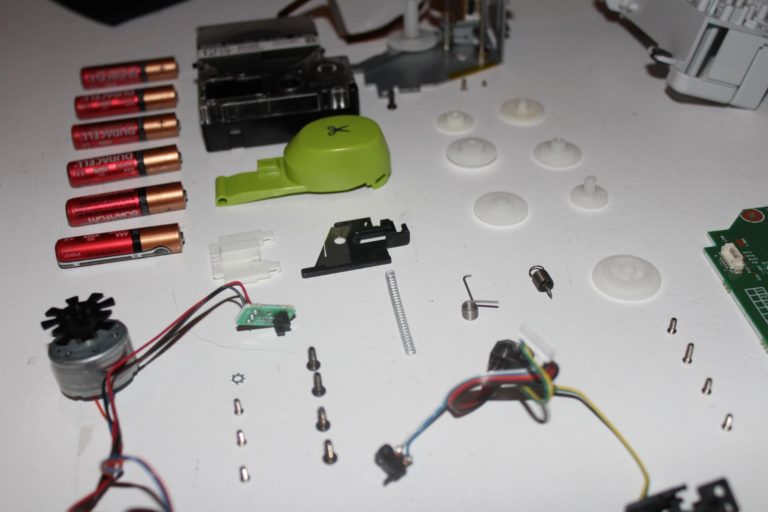Welcome to another round of teardown showdown! This week we present A Tale of Two Watches.
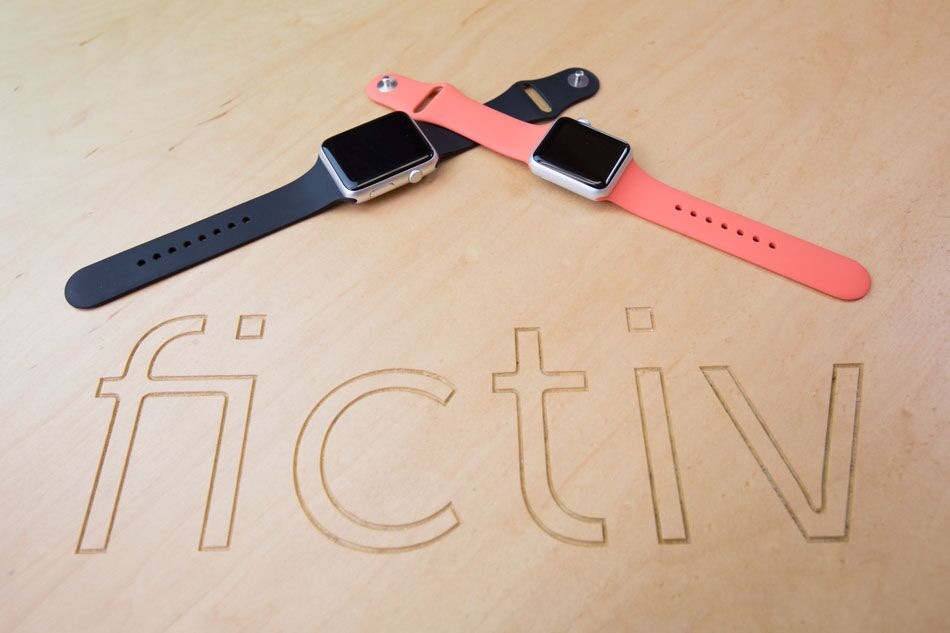
No, we’re not pitting a 42mm Apple Watch against a 38mm Apple Watch; what’s the point of that? Instead, this showdown is between a real apple watch and a fake one.
Look at the picture again: Only one of these watches is the real deal! Can you tell which one’s real, just from the photo?
Here’s what we know about our contestants:
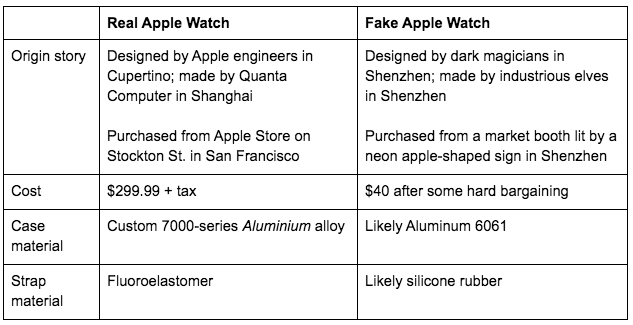
There are a lot of fake Apple watches available for purchase in Shenzhen; I’d like to think we picked a pretty good one. These knock-off magicians did a great job with the top side appearance; it could fool someone from a moderate distance!
When you flip the watches over, that’s where the disguise falls apart. The Fake Apple Watch still relies on physical contact pins to charge itself, whereas the Real Apple Watch is charged by induction.
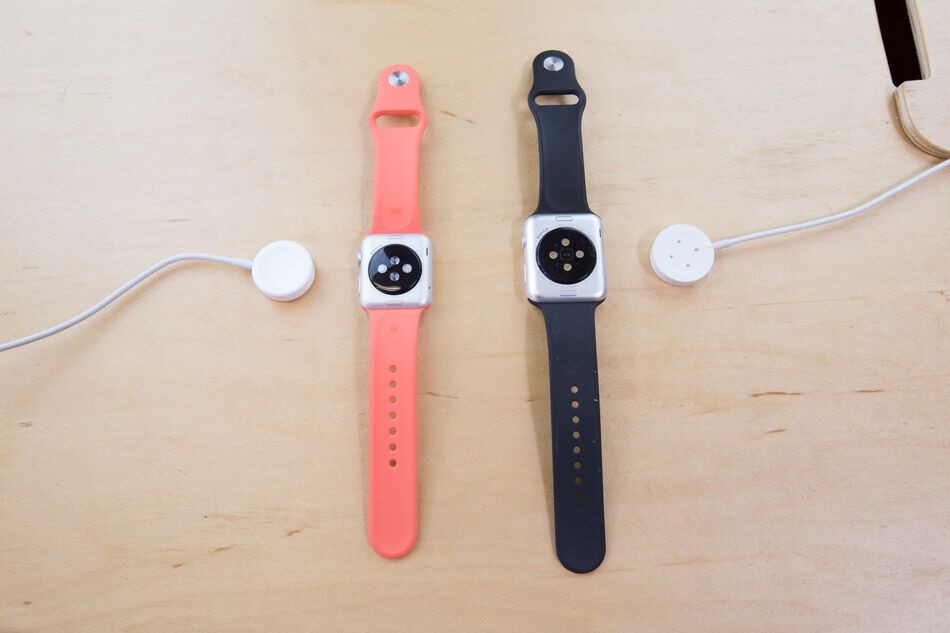
We opened both watches the same way: by warming them up with this high-tech apparatus to loosen adhesives and prying their screens off with a sharp blade.
It was a lot easier to pry the screen off the Fake Apple Watch. The aluminum case on the Fake Apple Watch is soft and feels like regular Al-6061; it was no match for my trusty Leatherman.
However, the Real Apple Watch case is noticeably harder and put up quite a fight. Apple advertises that its custom alloy is 60% stronger than standard alloys. We suspect it’s comparable to 7000 series aluminum.
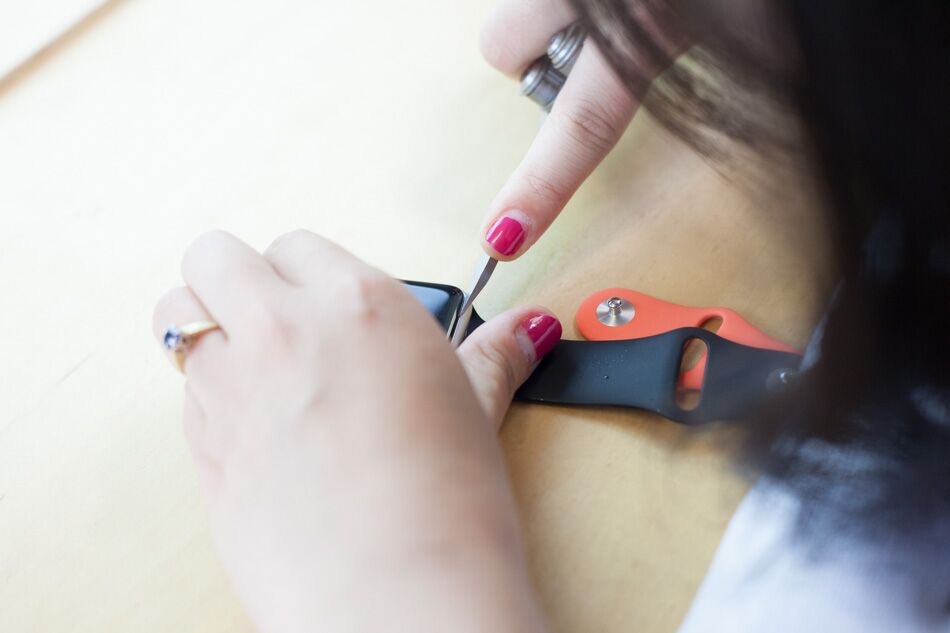
We could also tell that the Fake Apple Watch’s screen was held on with formerly liquid adhesive.
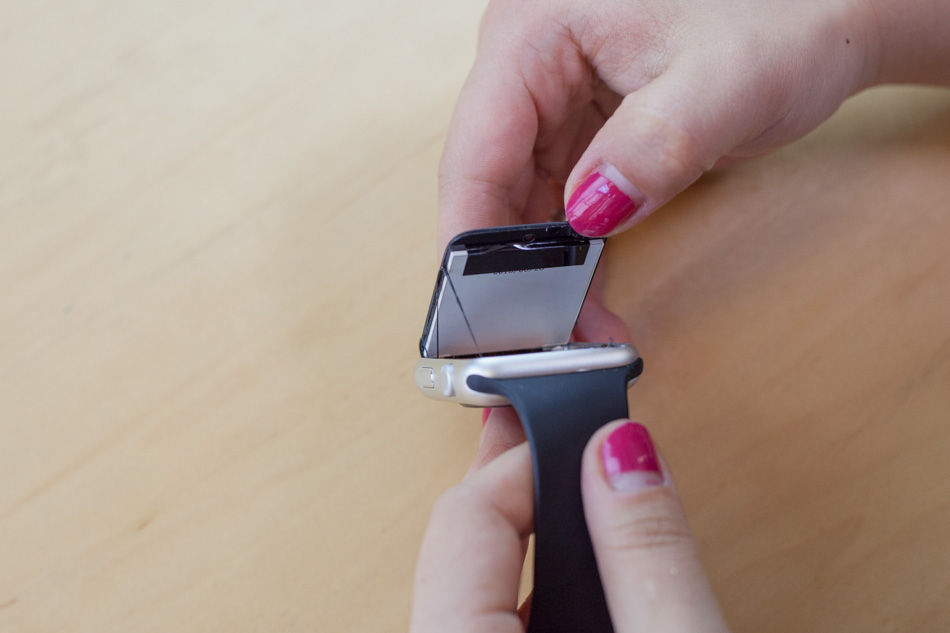
In contrast, the Real Apple Watch’s screen is attached by pressure-sensitive adhesive tape.
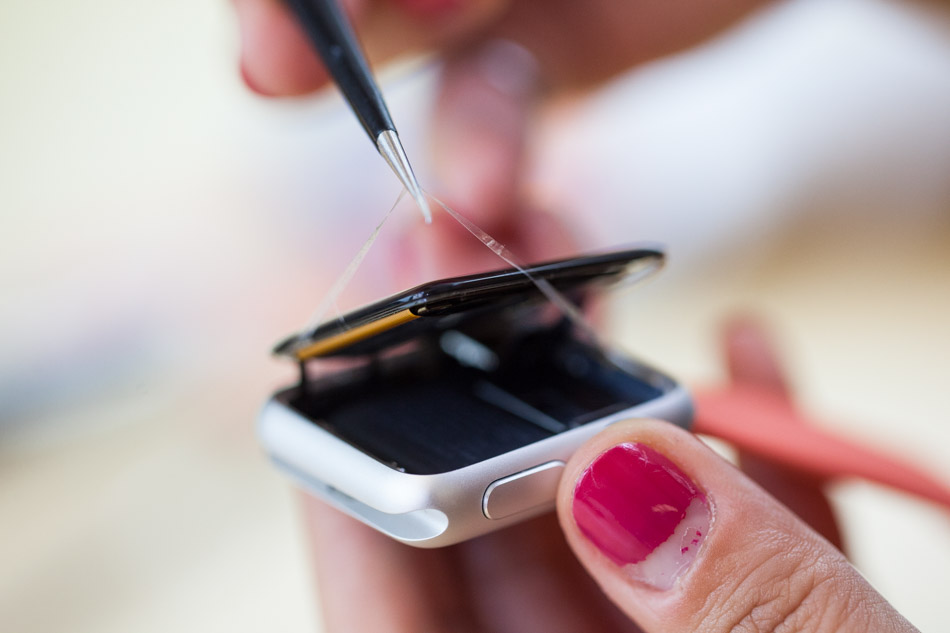
And we’re in!
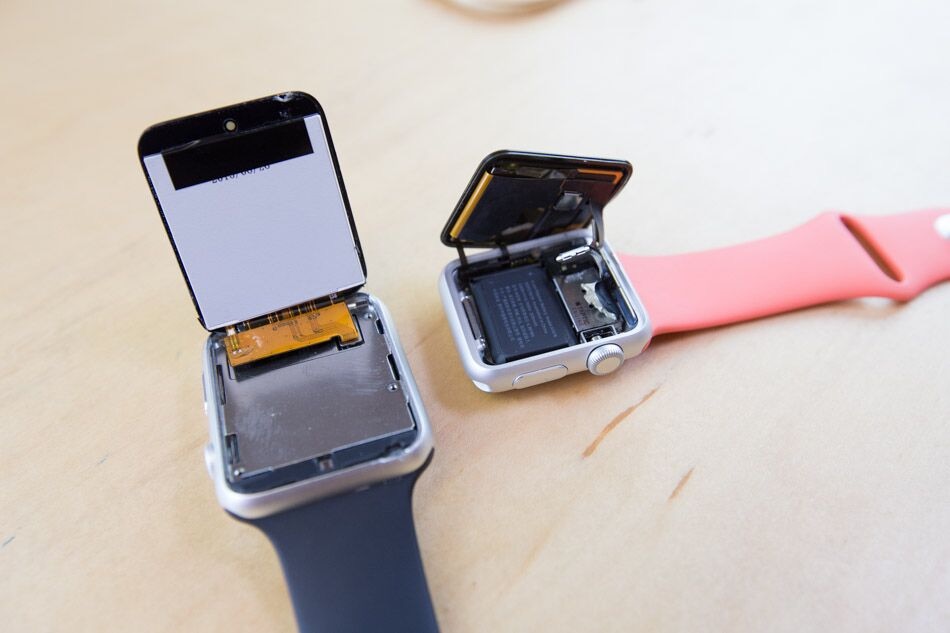
Display Module Comparison
Let’s look at the screens first. It’s quite obvious that the Real Apple Watch has a lot more going on.
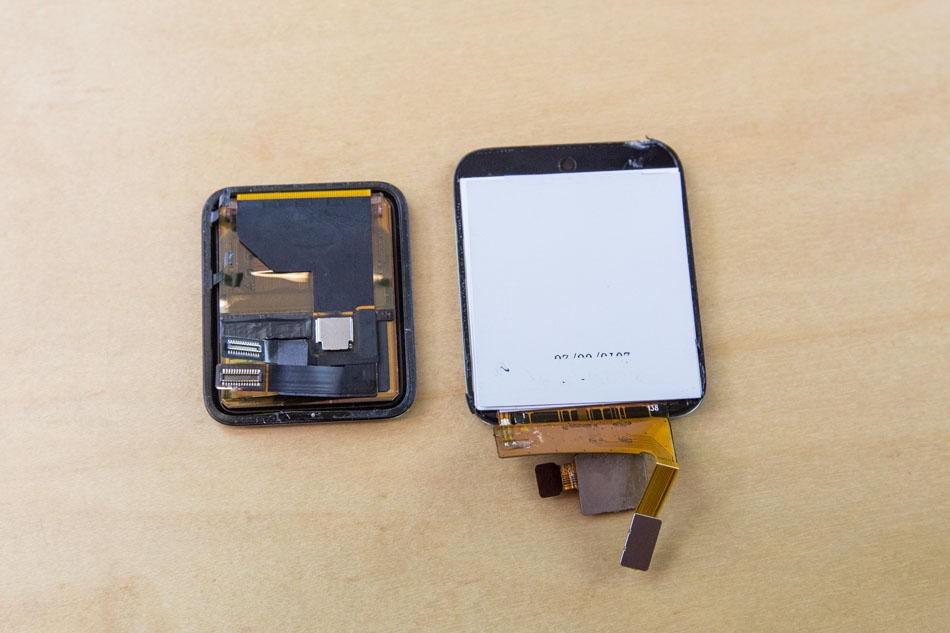
The Fake Apple Watch has a fairly standard LCD—it’s the kind of LCD screen you used to find on old iPhones. The build quality is awful; all of these layers peeled off without any effort on our part.
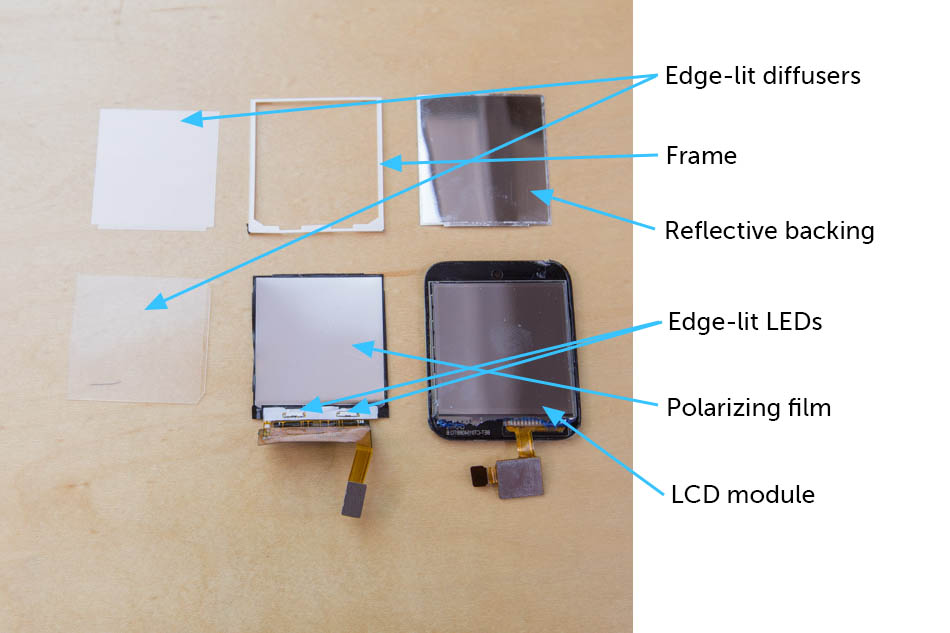
In contrast, the Real Apple Watch features technology that you only find in high-end electronics. The flexible OLED display is super thin and makes traditional LCD screens look outdated.
The force touch sensor is essentially a gasket between the screen and the case, made of a ring-shaped flexible circuit board (FPC). Those two little arms were once attached to a connector—I got docked points for ripping those off.
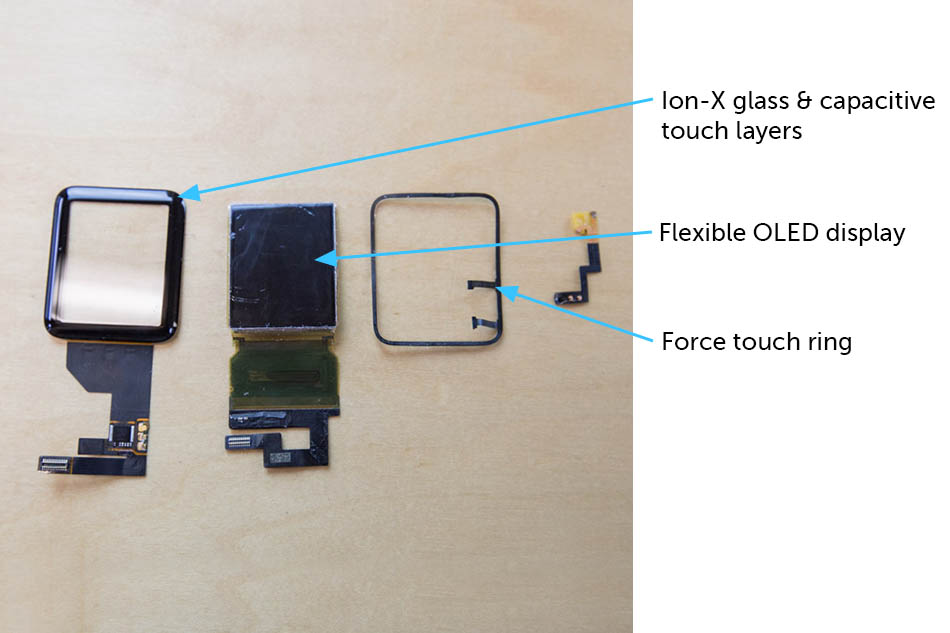
Fake Apple Watch Internal Components
The Fake Apple Watch’s guts are hidden from us by a sheet metal bracket. It’s actually laser welded onto the metal bosses below. It didn’t take much to pry this thing off, though.
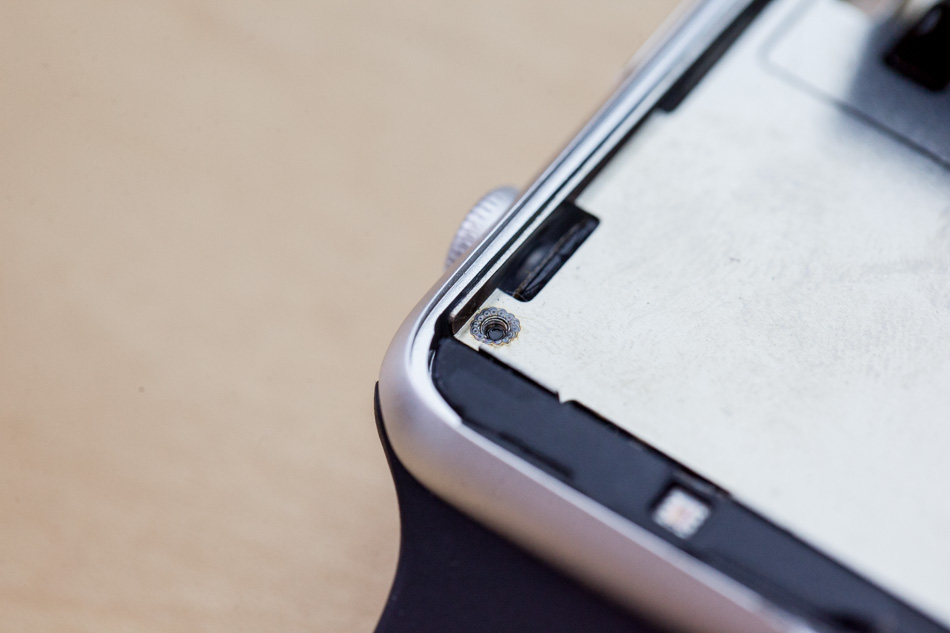
Now, we can see both watches’ organs side-by-side. The Fake Apple Watch was quite possibly designed by someone who had never seen the inside of a real Apple Watch—there are no similarities!
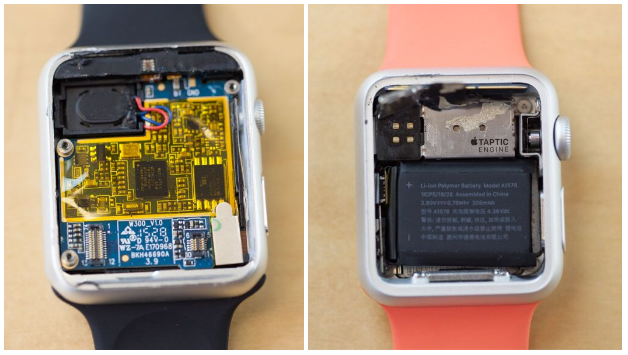
The Fake Apple Watch’s PCB is small, but it’s not crazy miniaturized. It has a MediaTEK ARM processor, and the battery has a capacity of 100mAh. Silkscreen markings indicate that this was made in July 2015, just a few months after the Real Apple Watch started shipping.
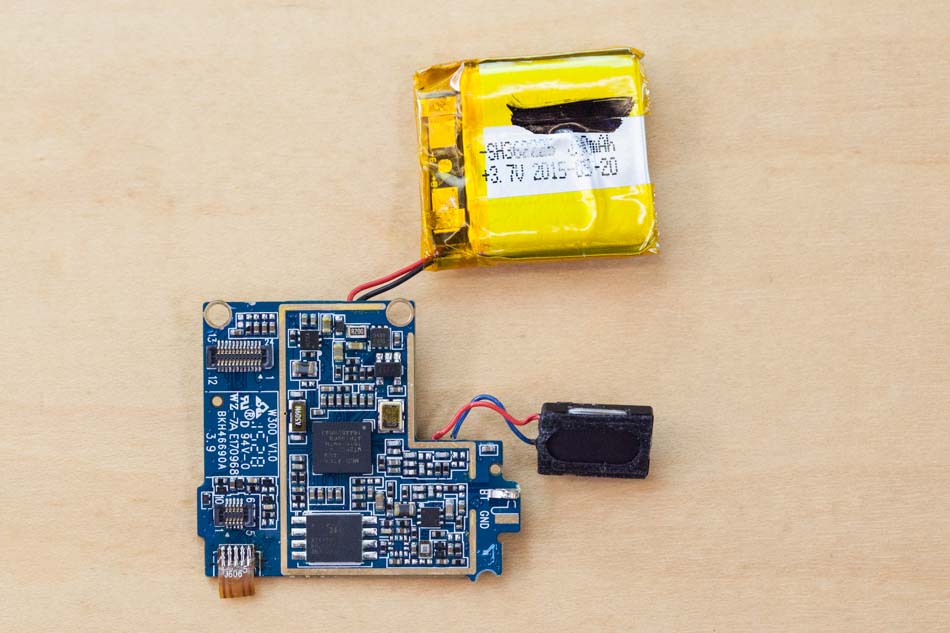
Here, you can see the FPC that holds the heart rate sensor and internal charging contacts. It’s impressive that there is even a heart rate sensor; that’s real attention to detail. We tried this feature before the teardown and minutes after, but my heart rate still didn’t produce a reading.
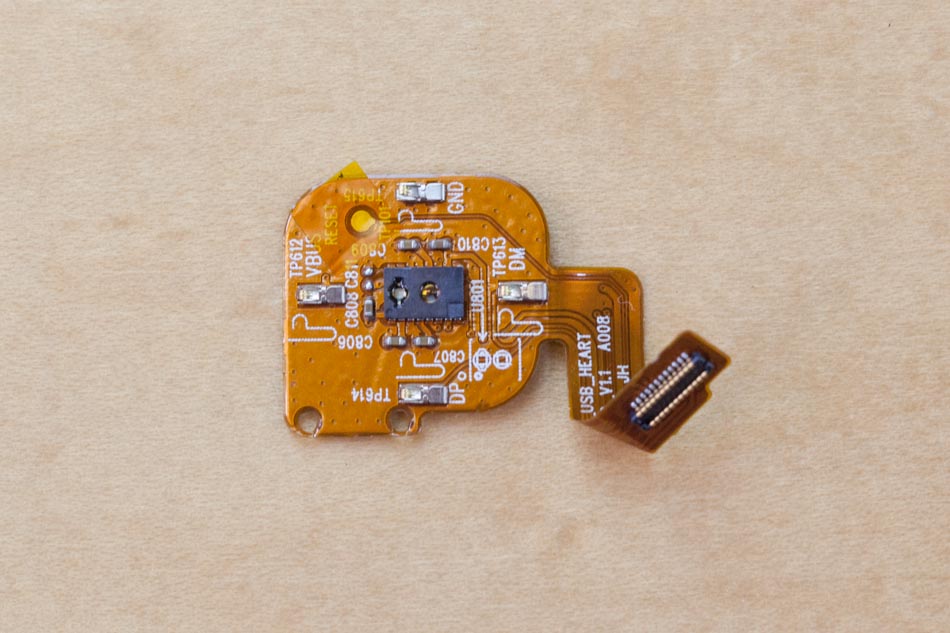
Here’s the vibrating disk motor. This is a very common component used in prototyping; if you have a project that needs some haptic feedback, you can get one from Adafruit.
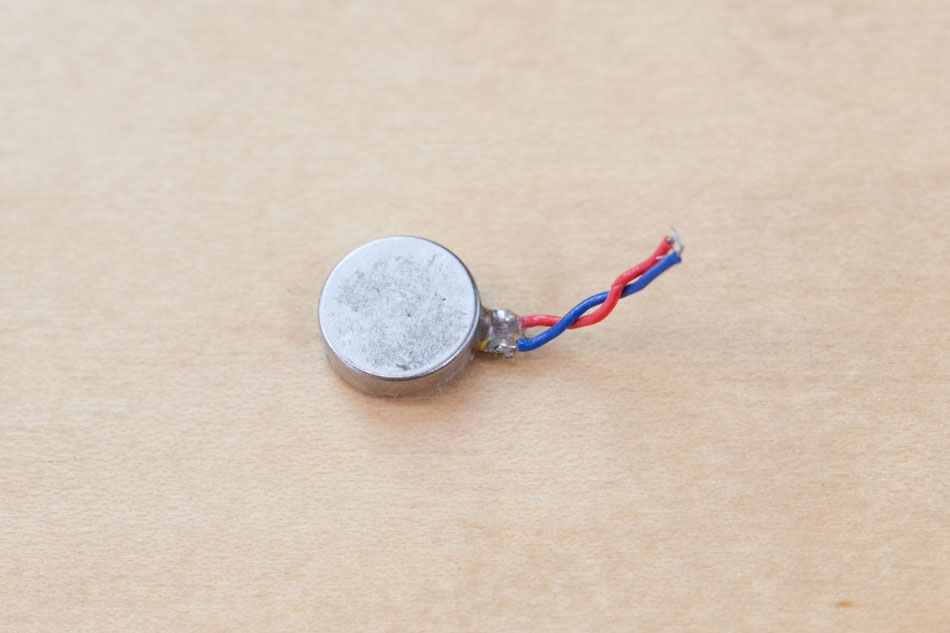
The digital crown doesn’t actually work when you turn it. It’s just a glorified pushbutton. An O-ring retains it to the case.
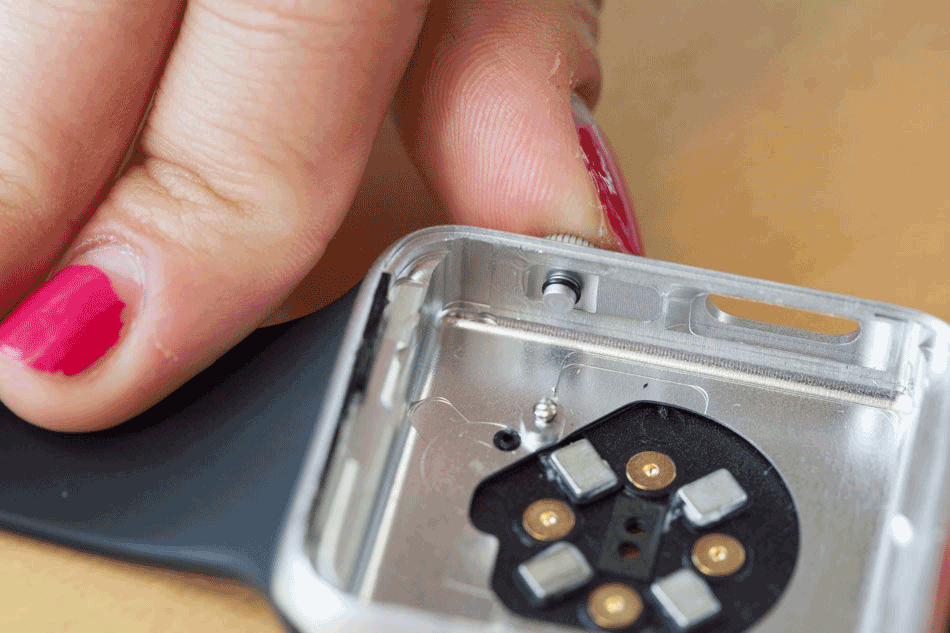
The buttons are CNC aluminum with an elastomer soft backing.
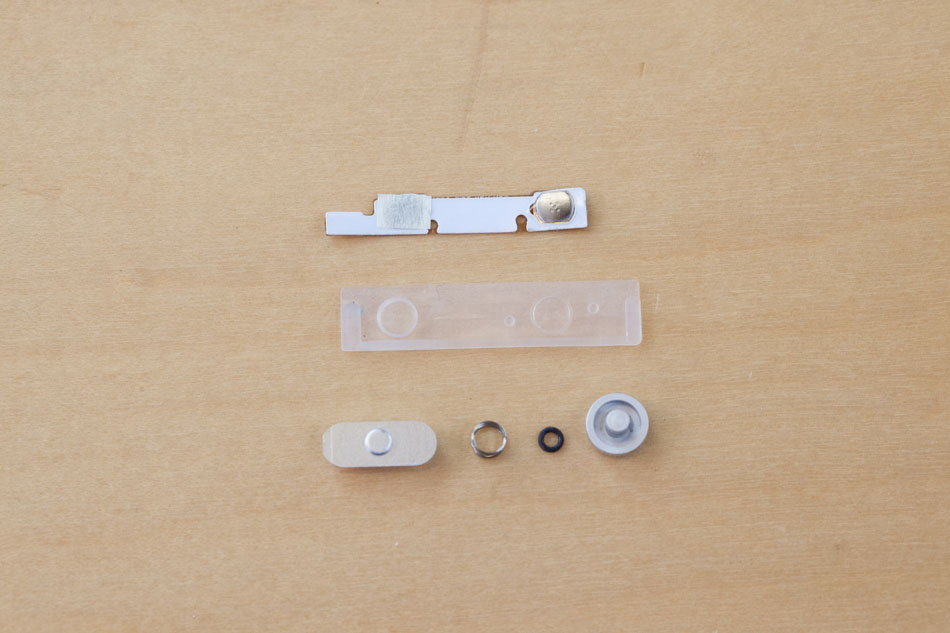
The side buttons’ switches are on the same PFC, tacked onto a plastic bracket with pressure-sensitive adhesive. Notice that one of the dome switches has a piece of masking tape over it. Hey, if your button top isn’t hitting the switch, just add some more material!
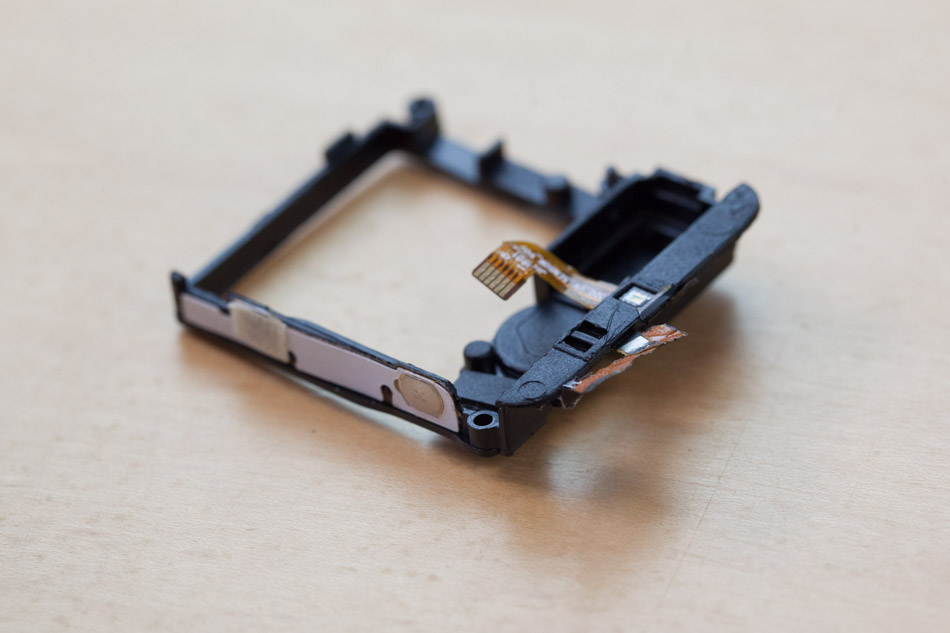
The watch strap release has two snap-fit cantilever arms; tiny springs return them to position.
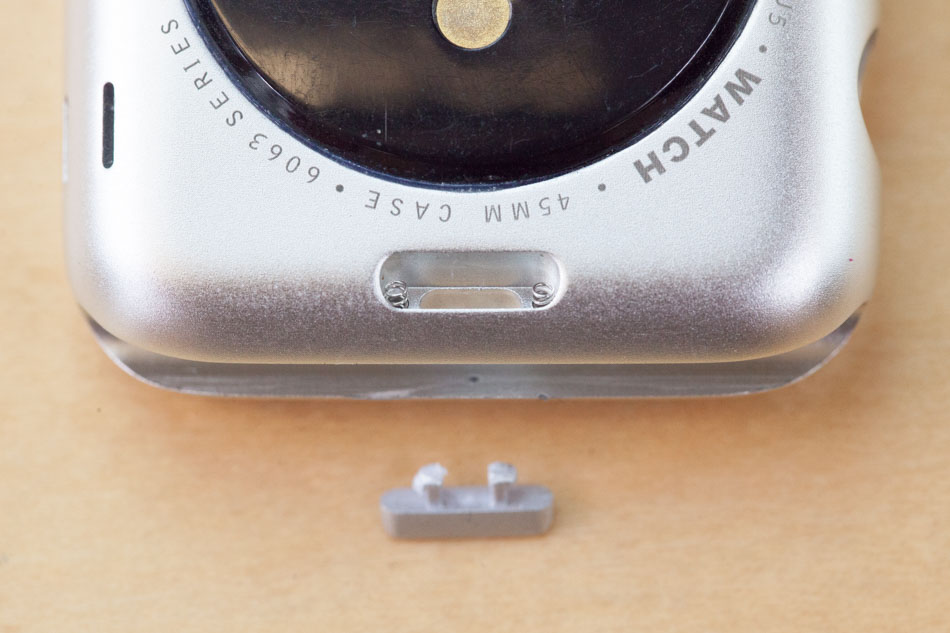
The strap release component is actually plastic, painted metallic to match the aluminum housing.
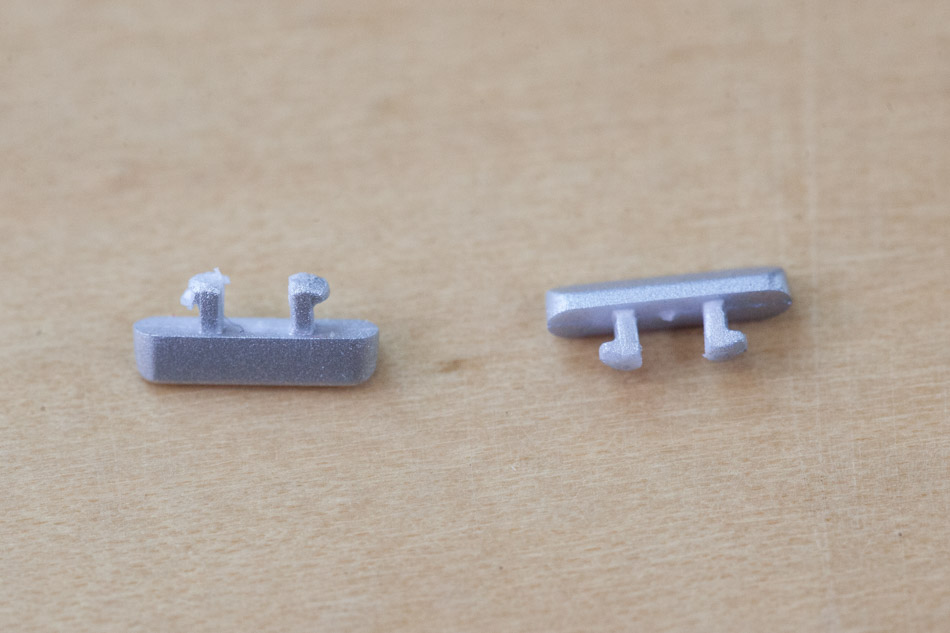
It took a lot of strength to separate the plastic back cover from the aluminum case. The amount of glue used is impressive. Copper contacts for charging and magnets for attaching the charger are glued into the back cover, as well.
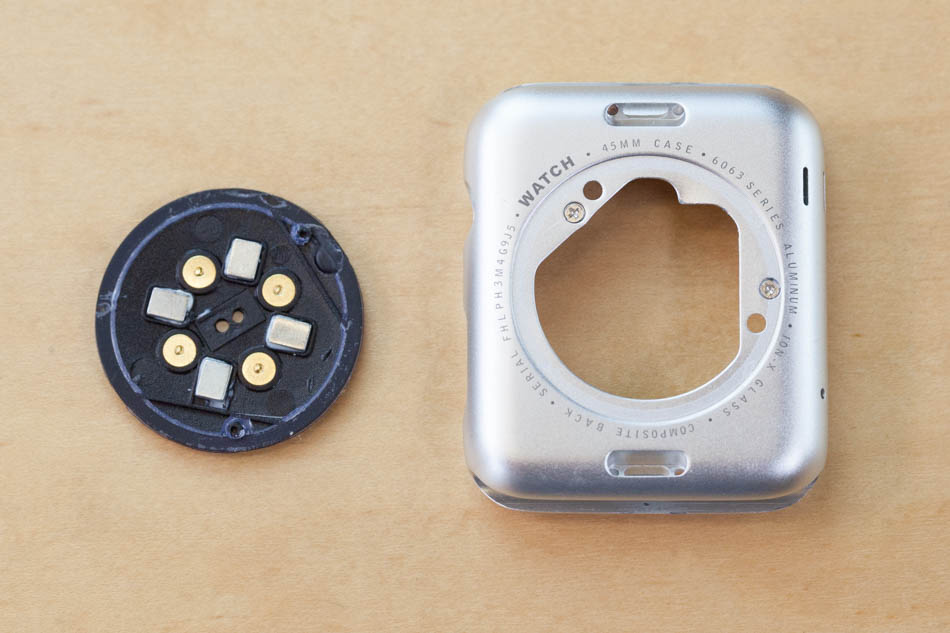
Now, let’s take a look at the Real Apple Watch’s internal components!
Real Apple Watch Internal Components
The battery in the 38mm Apple Watch has 205mAh of capacity. The Real Apple Watch’s battery volume is almost the same as the Fake Apple Watch’s, but it has twice as much capacity. Apple magic!
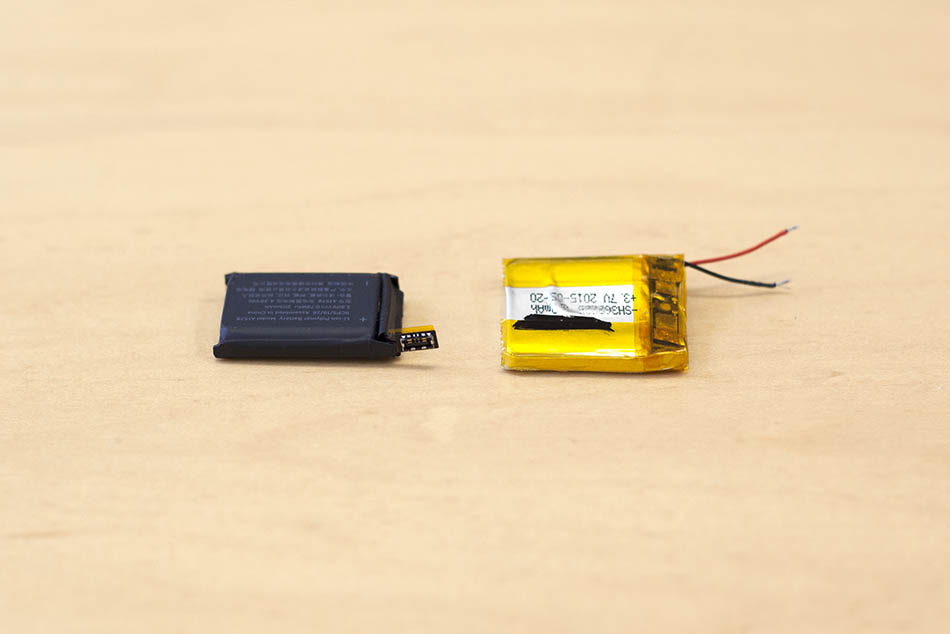
Extra component bonus: The Real Apple Watch has a diagnostics/programming flex board tucked into one of the side walls.
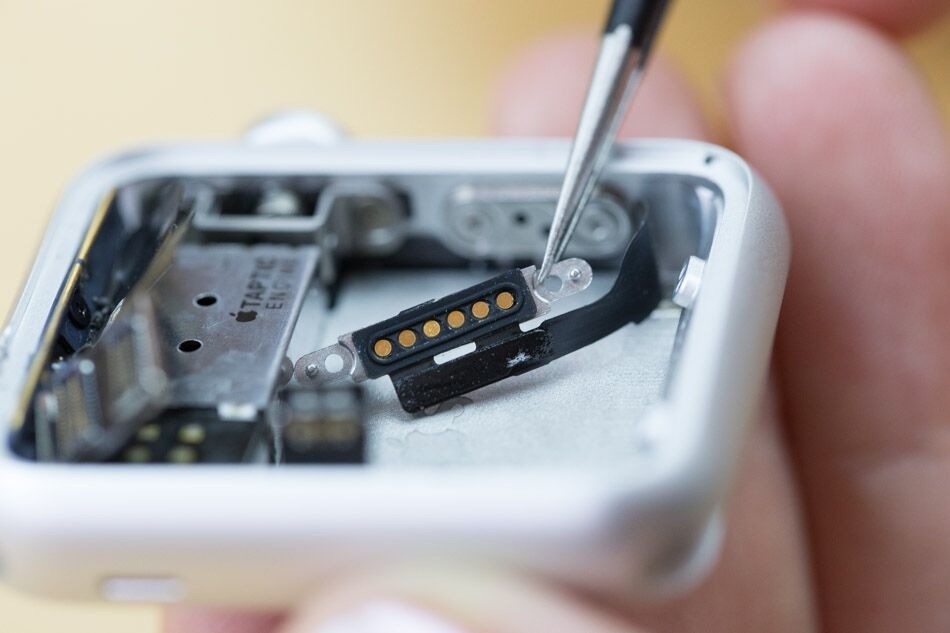
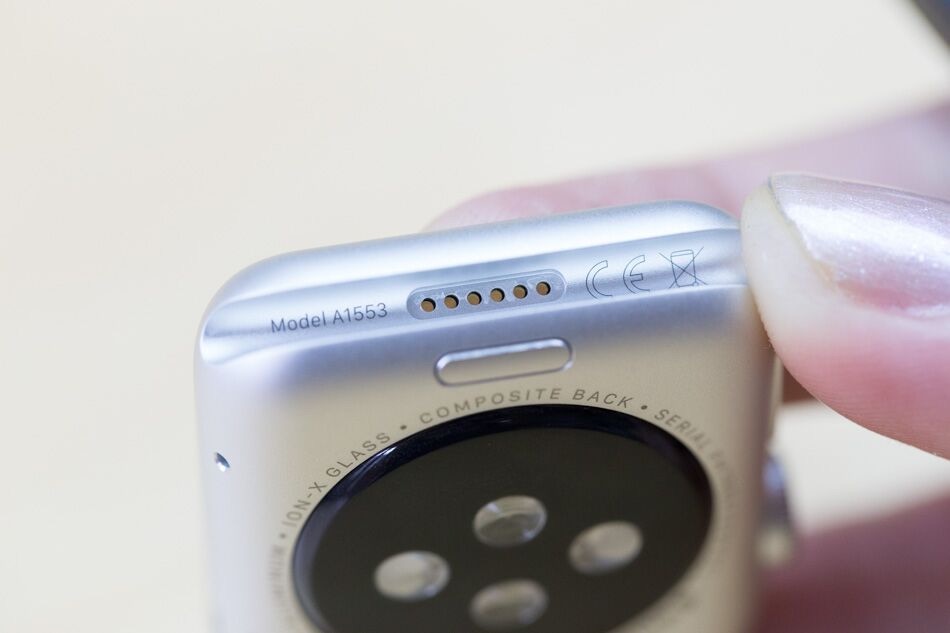
This is the Real Apple Watch’s speaker, it’s no full-range prima donna, but it sure is better than whatever the Fake Apple Watch has got.
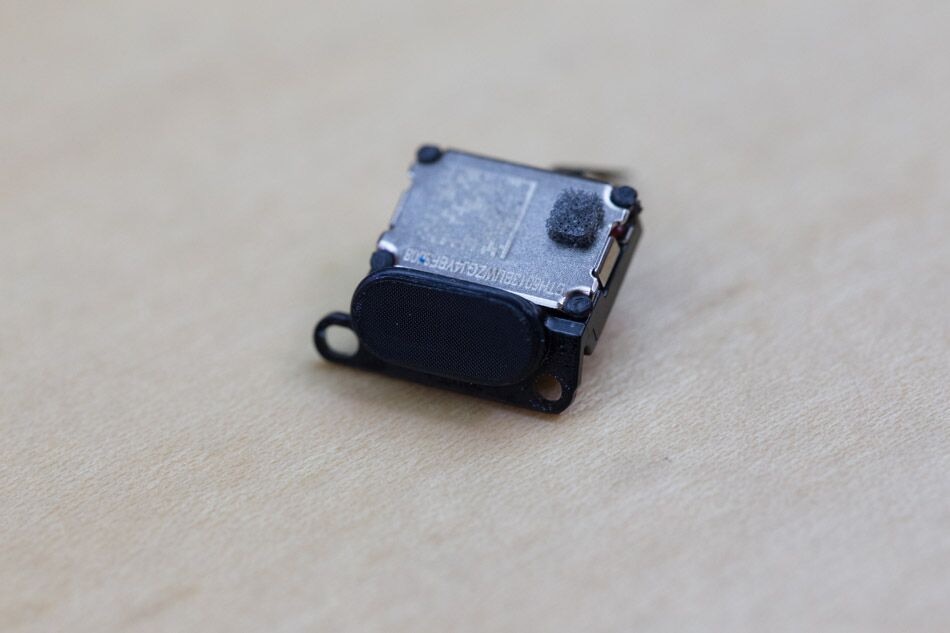
The Taptic Engine is one of the most interesting components in the Apple Watch. In iPhones, we’ve seen rectangular-and disc-shaped LRA (linear resonant actuators) motors give way to cylindrical ERM (eccentric rotating mass) motors.
The Taptic Engine is the next generation of haptic feedback components. After its initial debut in the Apple Watch, it has made its way into iPhones, iPads, and MacBooks.
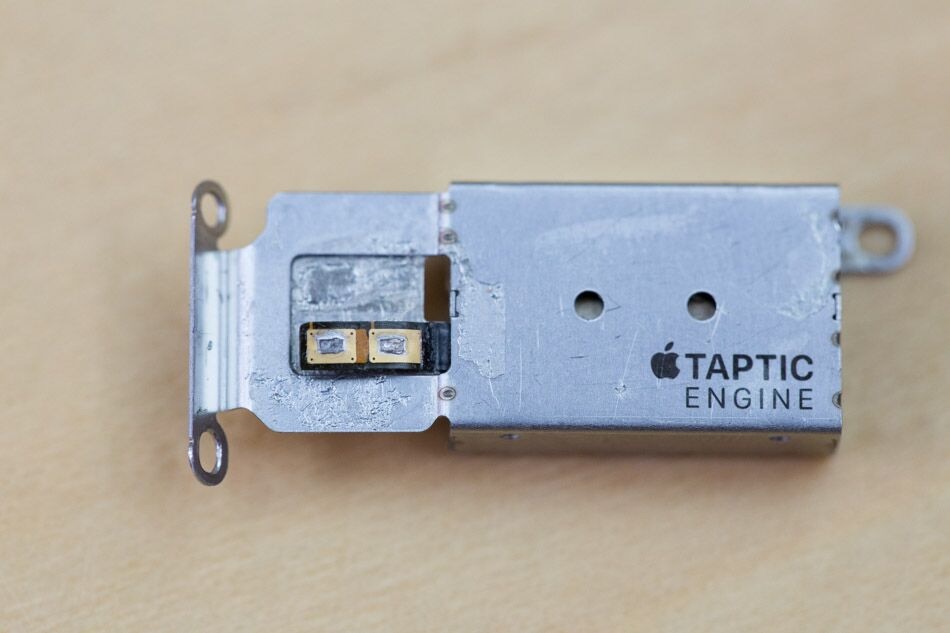
The Taptic Engine is a custom-designed electromagnetic linear actuator. Electric current passes through copper windings, which generates magnetic force. This magnetic force moves permanent magnetic masses along a center rod.
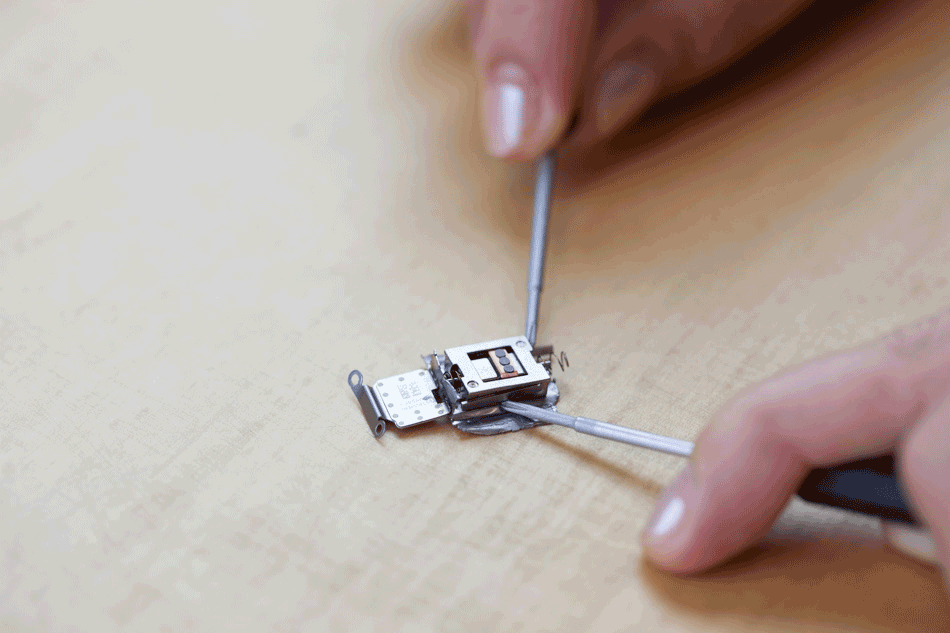
The side button switch and its mounting bracket are attached to the button top by a screw. The engineers can really dial in the tactile feel in this configuration.
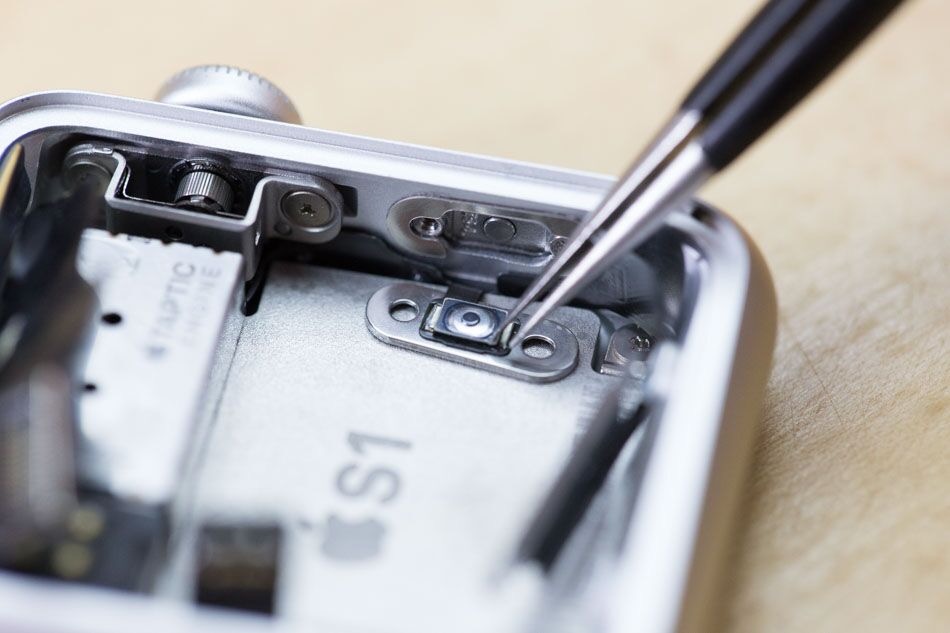
The side button assembly itself is an intricate multi-part assembly. The complication comes from the need to prevent water ingress at a moving interface.
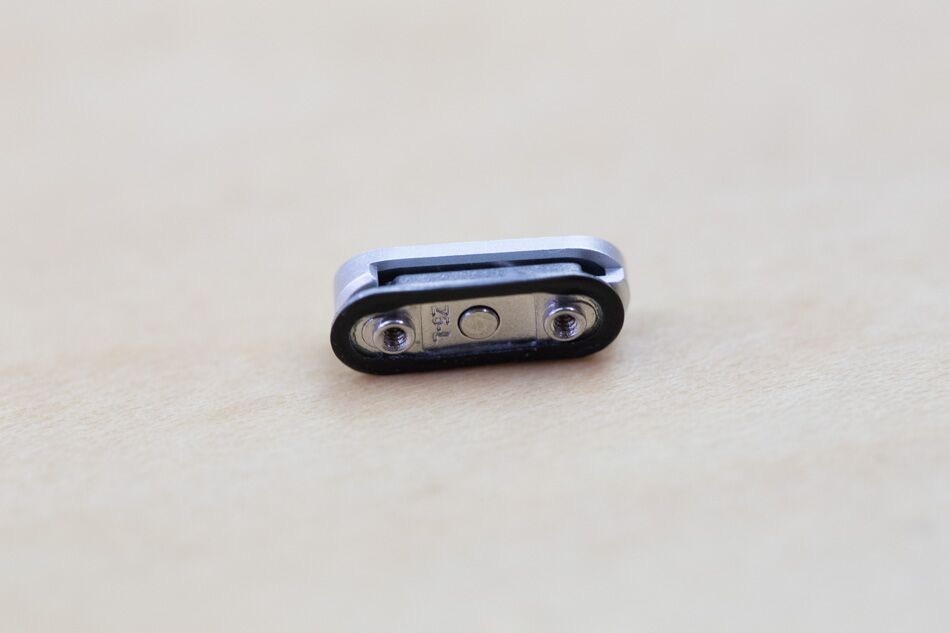
How this works: When the button top is pressed, it nudges a little cylinder that in turn presses the dome button switch on the inside of the watch case. Meanwhile, the stationary bracket never moves, and its O-ring forms a tight seal against the watch case.
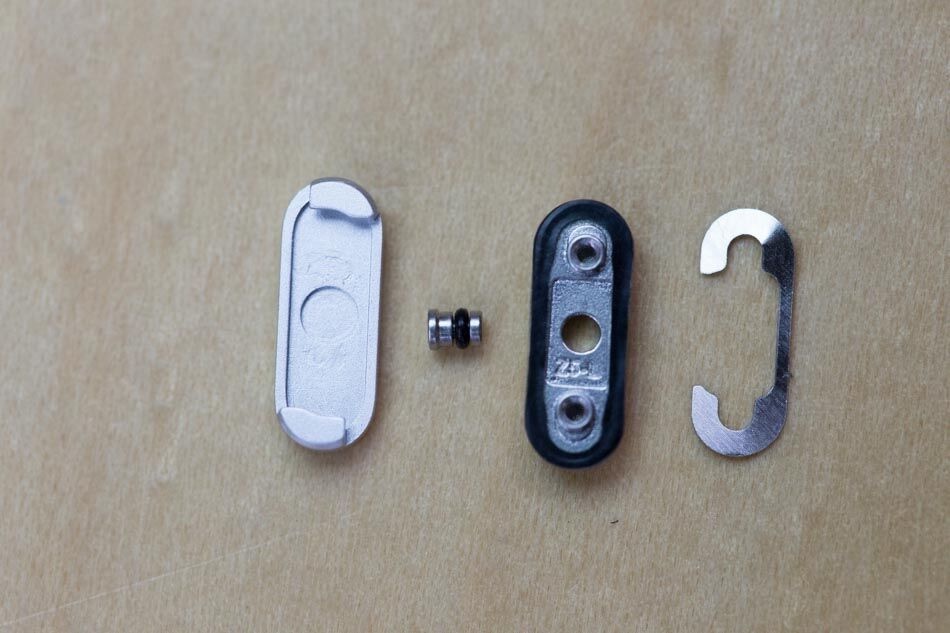
Beware that these tiny precision metal components aren’t for mere mortals’ BOM budgets. The stationary bracket part is zinc, formed by metal injection molding (MIM). The button top is possibly MIM aluminum.
The digital crown’s shaft is wrapped in O-rings, again to prevent water ingress. The sleeve bearing is the secret behind the amazingly smooth turn feel. The sleeve bearing is welded to a bracket on the inside of the case.
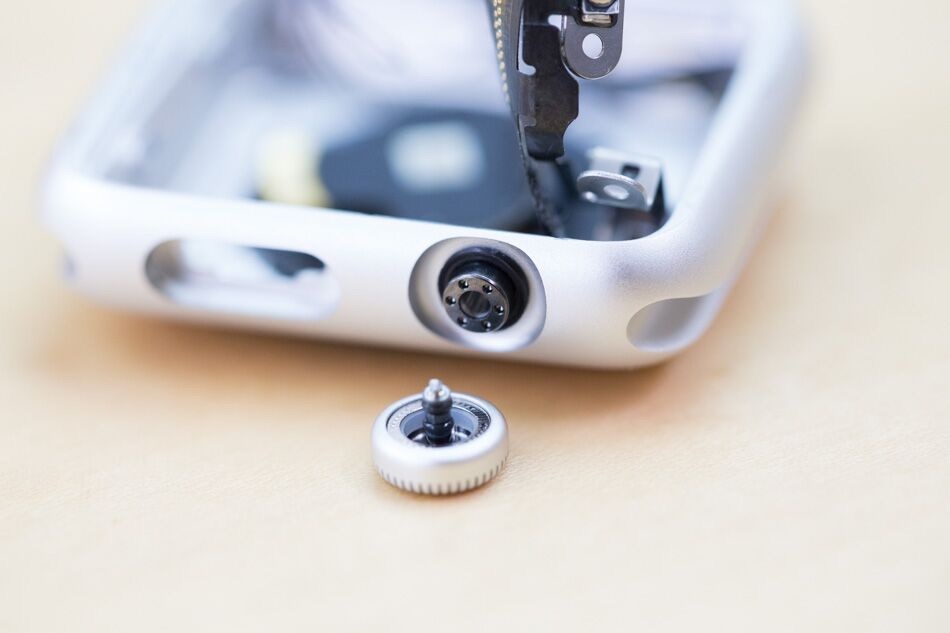
Here’s one more look at the button flex assembly. The Digital Crown’s tactile switch is on the left.
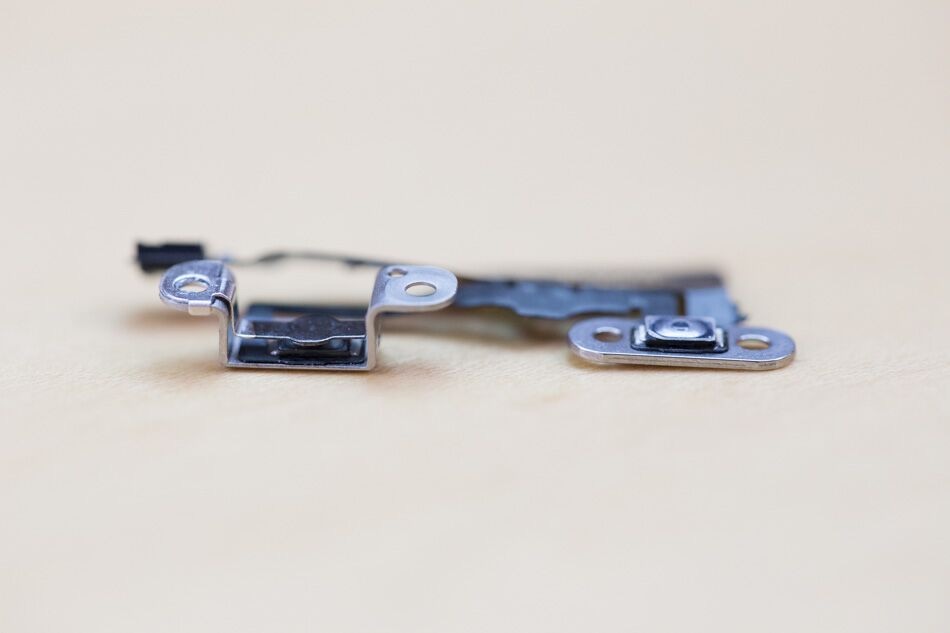
The Apple Watch has both Bluetooth and WiFi connectivity. Here’s its antenna, tucked into the twelve o’clock sidewall.
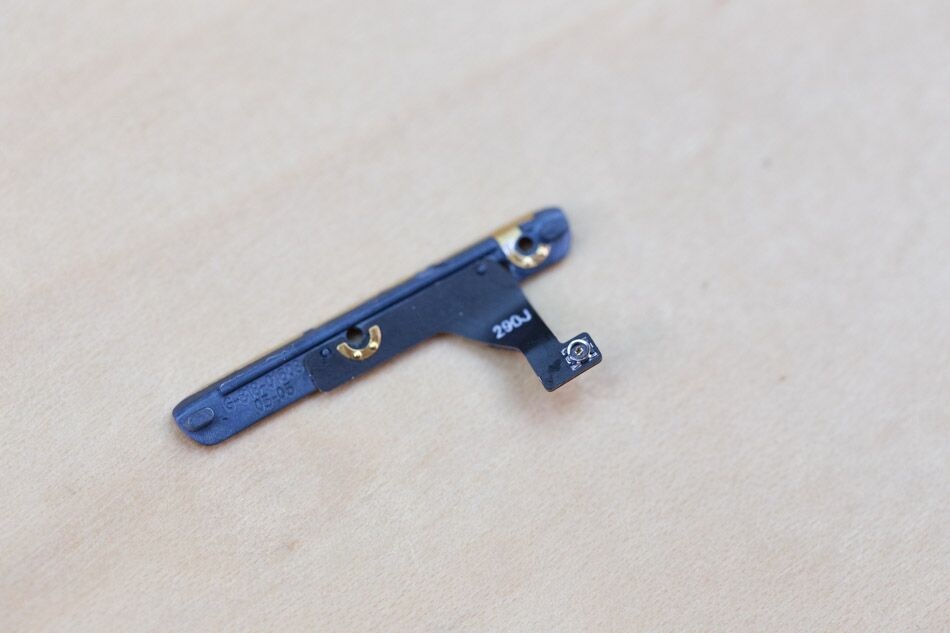
We didn’t find a conventional-looking main PCBA inside the Apple Watch, because that would be boring. The Apple Watch is powered by Apple S1, a “System in a Package”, also known as a circuit board completely encased in resin.
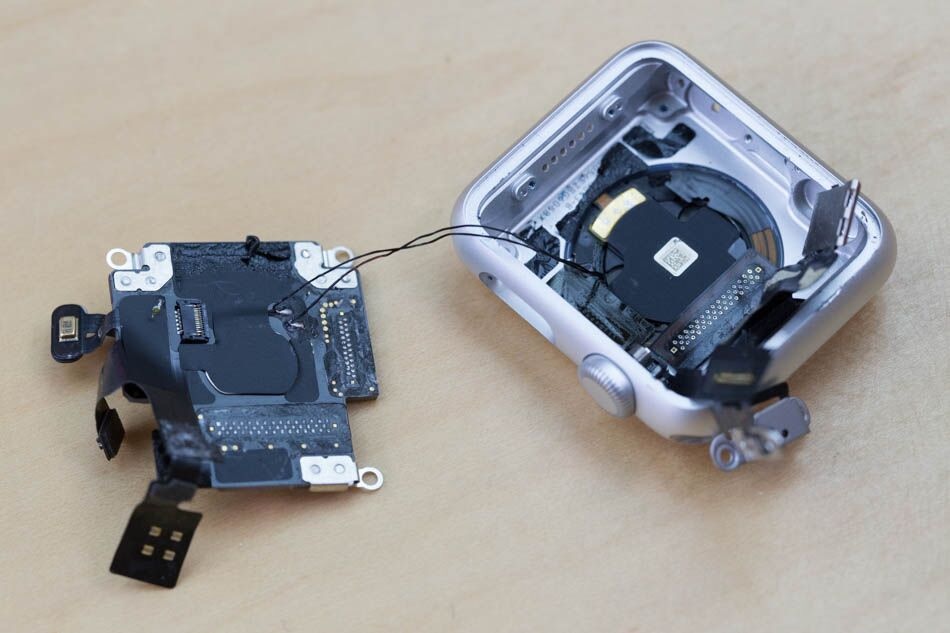
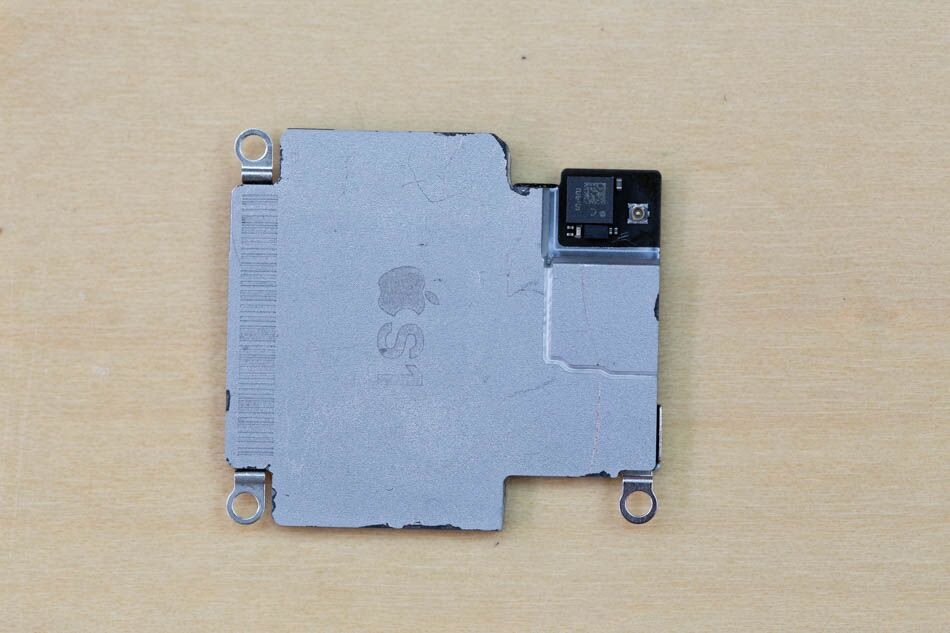
After the S1 comes off, we can finally see the heart rate sensor board and the back cover. The size of the LED and sensor components dwarf the LED-receiver pair found on the Fake Apple Watch and other wrist wearables.
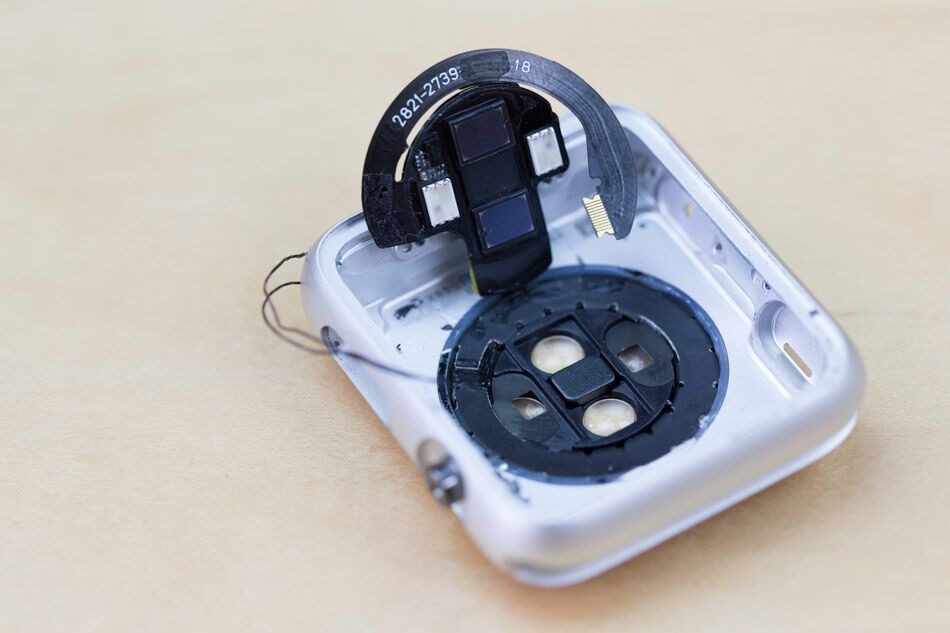
There’s only one magnet in the composite back cover. You can see how much glue was used to securely attach this to the case.
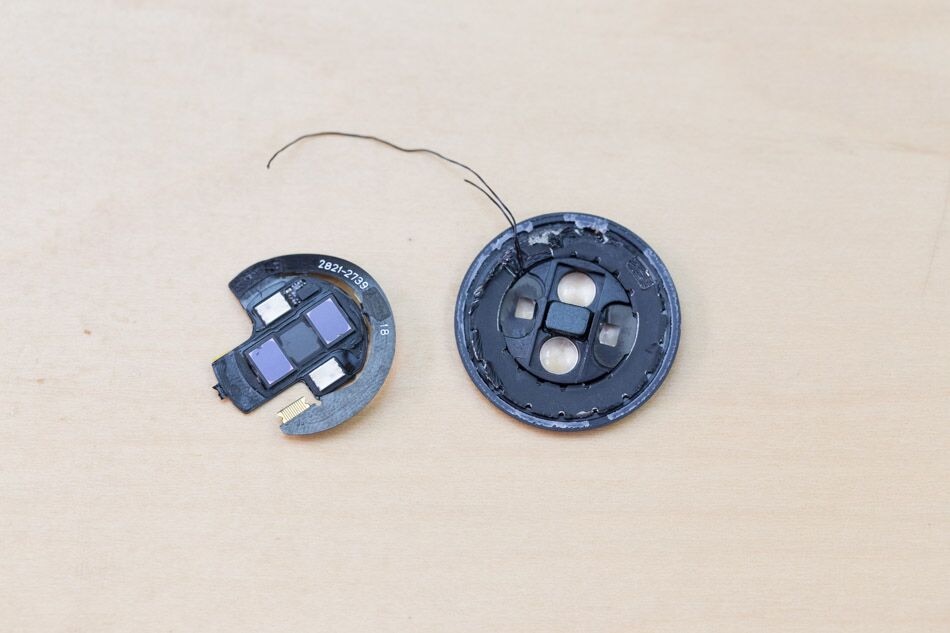
Showdown result
Was anyone actually rooting for the Fake Apple Watch? If so, we’re sorry—there wasn’t even a contest. From the quality of the charging method, to the sophistication of the electronics, to the materials used, the Real Apple Watch totally obliterated the pretender.
To be fair, the Fake Apple Watch is actually not a bad piece of hardware. It’s got all the building blocks that make up a typical wrist wearable. A semi-experienced, two-person ME+EE team could put this type of thing together, but interestingly, a lot of crowdfunded wearable projects never even get this far, so we’ll give the designers and manufacturers credit for effort.
The Real Apple Watch was designed by a large team of expert engineers and built on crazy advanced equipment, so it’s in a category of its own at this point. It takes a mountain of R&D cash to build something that truly pushes the envelope like the Apple Watch does; we can always count on Apple to show us the way to the future.
